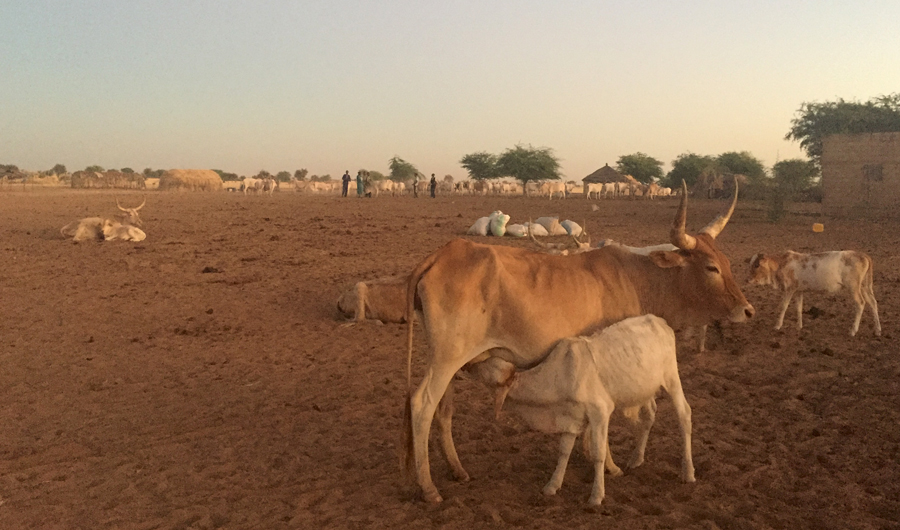Innovative tools for more sustainable and low-carbon livestock investment

Millions of people in the Sahel depend on pastoral systems for their food and livelihoods. That is why developing the sector in a way that is economically, socially and environmentally sustainable is so vital.
In designing the second phase of the World Bank-financed Regional Sahel Pastoralism Support project, known as PRAPS-2, an FAO team used innovative tools that provide evidence-based analysis for more sustainable and climate-sensitive livestock investment.
The project, building on the legacy of its predecessor, will introduce innovations for healthier animals and ecosystems, more resilient livelihoods and greater social and economic inclusion.
Around 13 million people in Burkina Faso, Chad, Mali, Mauritania, Niger and Senegal stand to benefit from PRAPS-2.
Economic and financial analysis
One of the tools used by the multidisciplinary FAO design team, led by the Investment Centre, was the Livestock Sector Investment and Policy Toolkit (LSIPT).
LSIPT, developed by FAO with the World Bank and the French Agricultural Research Centre (CIRAD), provides analysis on the benefits and costs of livestock investments.
According to FAO Senior Livestock Investment Officer Marc Moens, the toolkit “gives decision-makers the evidence they need to make strategic choices and attract public and private investment.”
FAO Economist Gabriel Boc added that LSIPT was instrumental in the preparation of the project’s economic and financial analysis.
“It allowed for various livestock production systems, many herd models and different scenario analyses, and supported the preparation of a solid cost-benefit analysis,” he said.
Beyond economic and financial analysis, LSIPT can be used to carry out livestock sector assessments and livestock master plans.
Greenhouse gas emission accounting
The team also used the Global Livestock Environmental Assessment Model-interactive (GLEAM-i).
Developed by FAO, GLEAM-i is an open and free online tool that estimates greenhouse gas emissions from the livestock sector. It looks at the life cycle of animal products, from production of inputs to farm gate.
By building both a baseline and other scenarios, users can compare their project’s impact on greenhouse gas emissions, protein production and feed intake.
The tool can be used by government officials, investment project analysts, producers and civil society actors for low-carbon and resilient livestock development. It can also be used to strengthen the quality of economic and financial analyses by estimating environmental externalities.
Anne Mottet, FAO Livestock Development Officer, said that “PRAPS-2 has been a great opportunity to apply GLEAM-i at scale and promote the tool to PRAPS-2 countries for future investment planning use, such as livestock master plans. It can also help countries better include livestock investments in their commitments to addressing climate change, including Nationally Determined Contributions.”
Transferring knowledge
The Permanent Interstate Committee for Drought Control in the Sahel (CILSS) will retain the role of the project’s regional implementing agency under the political leadership of the Economic Community of West African States and the West African Economic Monetary Union.
The CILSS envisions collaborating further with FAO to strengthen its capacity to use the tools to gain a better understanding of how pastoralism can drive economic growth, reduce poverty, hunger and malnutrition, and contribute to climate change mitigation and adaptation.
“This partnership between CILSS and FAO will be key to generating useful data and knowledge on the importance of pastoralism at the national and regional level,” said Julien Vallet, FAO Economist and team leader.
